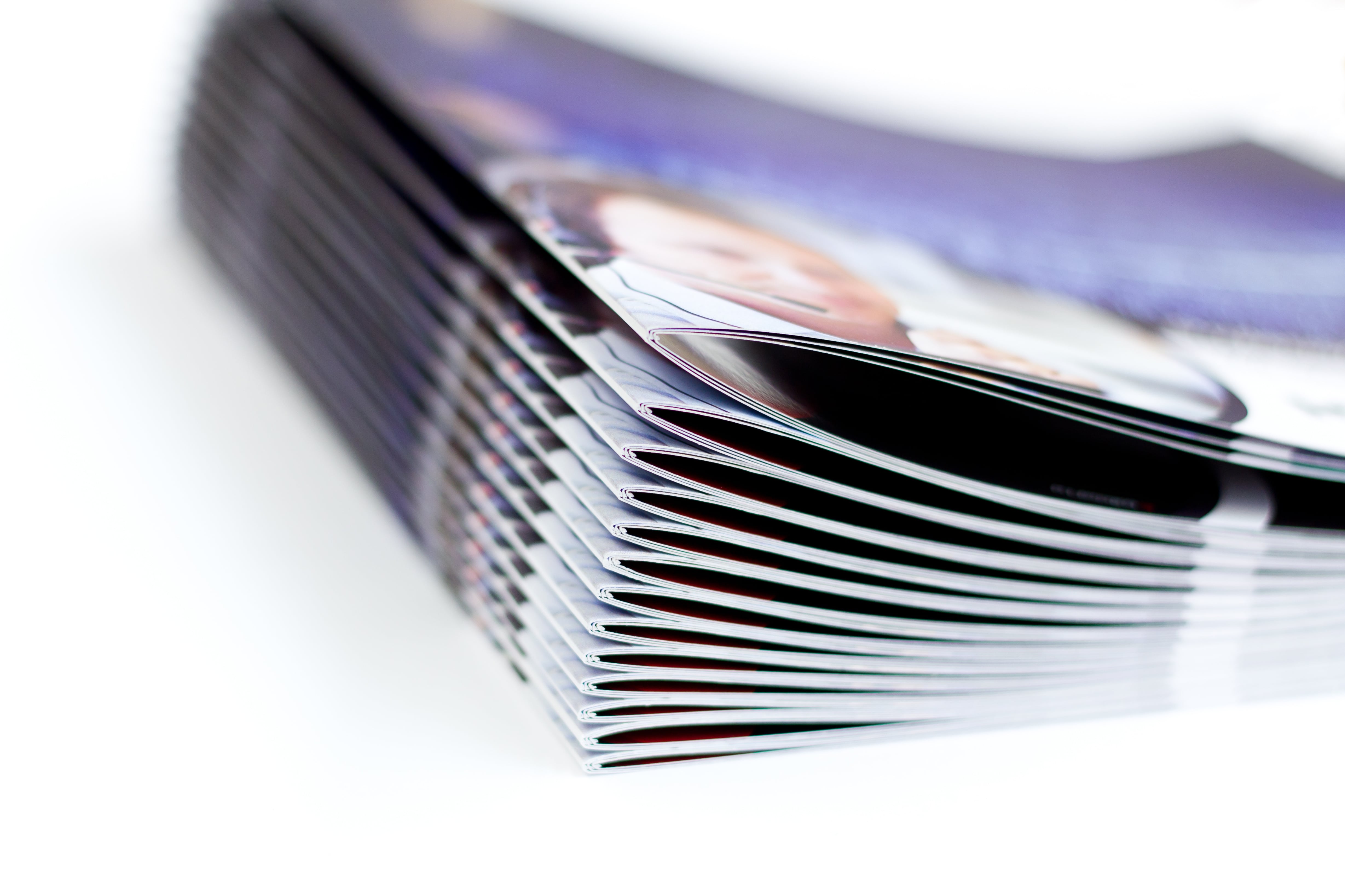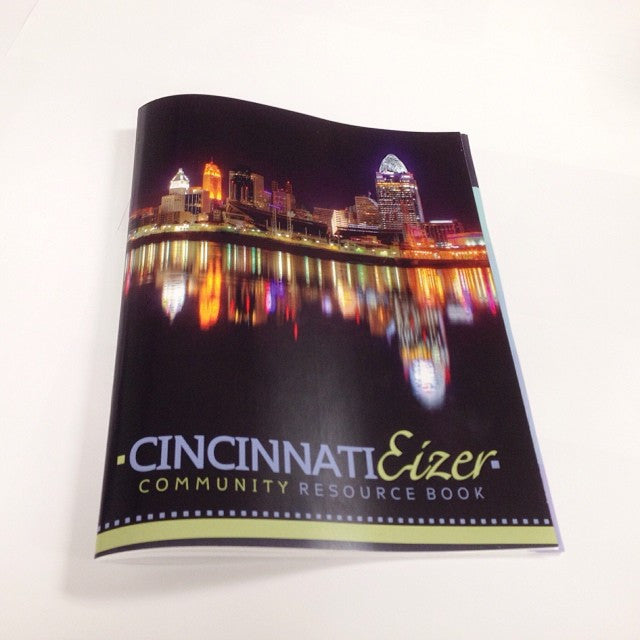Enhancing Trade Show Success with Strategic Booklet Printing
Enhancing Trade Show Success with Strategic Booklet Printing
Blog Article
The Vital Overview to Understanding Booklet Printing Options and Techniques
The procedure of pamphlet printing entails numerous factors to consider that can greatly affect the end product. From picking the ideal layout and dimension to comprehending the subtleties of binding methods, each option plays an essential duty. Additionally, aspects such as paper supply and printing techniques more influence the efficiency of the brochure. As one navigates these alternatives, it comes to be vital to comprehend just how they interconnect and what that indicates for the total end result.
Understanding Booklet Formats and Dimensions
When taking into consideration brochure printing, comprehending the different layouts and dimensions available is important for accomplishing the wanted presentation. Pamphlets can be generated in numerous layouts, including saddle-stitched, spiral-bound, and perfect-bound, each offering distinctive benefits. Common sizes range from typical letter (8.5 x 11 inches) to smaller sized options like A5 (5.8 x 8.3 inches), permitting flexibility based on content and target audience.Selecting the proper size can influence both the design and visitor involvement. Larger dimensions might suit aesthetically driven content, while smaller sized formats might be a lot more user-friendly and mobile. In addition, the variety of pages influences the choice of binding technique, as thicker pamphlets may need sturdier bindings. Eventually, comprehending these elements enables for a much more tailored technique, making sure that the final item lines up with the intended message and aesthetic, boosting the total effectiveness of the interaction.
Selecting the Right Paper Stock

Binding Approaches: Options and Considerations
When it concerns binding approaches for brochures, numerous alternatives are offered, each with unique benefits. Saddle stitch binding offers a cost-effective solution for thinner brochures, while best binding strategies supply a more sleek seek thicker magazines. Wire-O binding stands out for its durability and convenience of use, making it excellent for papers that call for flexibility.
Saddle Stitch Binding
Saddle stitch binding offers a cost-efficient and functional remedy for putting together pamphlets, making it a preferred option among authors and companies. This binding approach entails folding sheets of paper in half and stapling them along the fold line, producing a orderly and cool appearance. Typically ideal for pamphlets with a reduced web page count, saddle stitching is excellent for magazines, sales brochures, and educational materials. The simplicity of this method permits for fast production and is often favored for short runs or marketing items. Nevertheless, it is vital to keep in mind that saddle stitch binding may not appropriate for thicker booklets, as the spinal column might not hold up under enhanced weight. Generally, it stays a trusted option for numerous printing projects.
Perfect Binding Strategies
Perfect binding is an extensively used technique that provides a professional and polished coating to booklets and magazines. This approach involves gluing the web pages with each other at the spine using a strong adhesive, permitting for a clean side and the capacity to hold a bigger variety of web pages compared to saddle sewing. Perfect binding is particularly appropriate for thicker pamphlets, such as magazines and annual reports, where a strong, flat spinal column is desired. In addition, it uses the choice for a published cover that can be developed to improve aesthetic allure. However, factors to consider such as web page matter, paper weight, and the planned use the pamphlet ought to be considered, as they can impact toughness and overall top quality.
Wire-O Binding Alternatives
Wire-O binding, known for its resilience and versatility, supplies an excellent choice for brochures that need simple web page transforming and a specialist look. This binding approach utilizes a collection of metal loopholes that hold pages securely, enabling them to lie level when open. It is particularly suitable for catalogs, presentations, and manuals due to its robust nature. Wire-O binding is readily available in numerous shades and sizes, fitting various page counts and densities. In addition, it allows the inclusion of covers and tabs, enhancing the pamphlet's total visual. Considerations for Wire-O binding consist of the choice of wire color, the size of the loopholes, and the level of modification preferred, all of which can profoundly influence the end product's appearance and performance.
Digital vs. Offset Printing: Which Is Best for You?
When choosing a printing approach for pamphlets, recognizing the distinctions in between digital and counter printing is crucial. Digital printing uses contemporary innovation to create high-grade prints quickly and cost effectively, making it excellent for short runs or tasks needing fast turnaround times. It enables modification, supplying the capability to publish on-demand with very little waste.In comparison, balance out printing is a typical technique that excels in generating large amounts with consistent high quality. It includes moving ink from a plate to a rubber covering, after that to the paper, which leads to lively colors and precise information. Nonetheless, balance out printing generally calls for longer setup times and is a lot more cost-effective for larger volumes.Ultimately, the option between digital and counter printing depends on job needs, budget plan, and wanted quantity. For small, time-sensitive projects, digital could be the ideal option, while balanced out might be more suitable for bigger, top quality manufacturings.

Creating Your Pamphlet: Tips and Finest Practices
When creating a brochure, cautious attention to format, font choice, and color usage can substantially boost its efficiency. A well-structured design guides the reader's eye, while appropriate typefaces assure readability and communicate the desired tone. Furthermore, effective use shade can stimulate emotions and highlight vital info, making the overall layout extra impactful.
Selecting the Right Design
Exactly how can one efficiently choose the appropriate design for a booklet? It is vital to evaluate the brochure's objective and target audience. A tidy, organized format improves readability and engagement. Using a grid system can aid in straightening components regularly, developing an expert look. Additionally, including visual hierarchy with differing sizes and positionings of images and message can guide the viewers's eye and emphasize crucial information. It is likewise crucial to leave sufficient white area, which prevents overcrowding and permits better focus. Testing various formats via mock-ups can offer insight right into just how the style executes in real-world scenarios, guaranteeing that the last item fulfills both practical and visual needs. Useful Picking Appropriate Fonts
A well-chosen font style can considerably boost the total layout of a pamphlet, complementing the layout and reinforcing the material's message. The choice of font styles ought to think about readability, particularly for body message, as it ensures the info comes to all viewers. Sans-serif fonts are usually favored for digital styles, while serif typefaces can offer a traditional feel in printed materials. It's advisable to limit font options to 2 or three to preserve visual comprehensibility. In addition, typeface size plays an essential role; headings should be distinct yet not frustrating, while body text ought to be comfortable for analysis. When choosing fonts, placement with the pamphlet's motif and target audience is vital for efficient interaction and aesthetic appeal.
Reliable Use Shade
Color works as a powerful tool in pamphlet layout, forming assumptions and leading viewers feelings. It can evoke sensations of depend on, excitement, or peace, relying on the hues chosen. Developers need to consider color concept principles, ensuring that the selected combination lines up with the pamphlet's message and target audience. Utilizing cozy shades like red and orange can produce necessity, while cooler tones like green and blue foster tranquility.Additionally, contrast plays an important function; corresponding shades can important source boost readability and visual appeal. Consistency in color usage throughout pages even more enhances brand identity and cohesion. Eventually, efficient shade execution not just records focus yet additionally strengthens the brochure's function, making it a necessary facet of effective style.
Completing Touches: Coatings and Unique Results
While several take into consideration the web content and format of a brochure one of the most critical elements, the ending up touches, such as layers and unique impacts, play a necessary function in improving its total charm. Coatings can provide security and toughness, making sure that the booklet holds up against damage. Matte coatings provide see this site a sophisticated, non-reflective surface area, while shiny finishings can make colors appear even more attractive and vivid. Unique impacts, like embossing or foil marking, include a responsive dimension that can develop a remarkable perception. These techniques can highlight details areas, accentuating vital details or developing aesthetic interest. Additionally, UV finishing can give a high-shine surface that boosts the general look.Together, these finishing touches not only enhance the pamphlet's aesthetic yet also connect professionalism and trust and attention to information, ultimately leaving a long-term effect on the viewers.
Cost Factors To Consider for Booklet Printing
Recognizing the numerous price considerations for brochure printing is essential for services and companies aiming to enhance their spending plans. Key aspects influencing prices include the choice of paper, ink, and binding techniques. Greater top quality products, such as premium paper or specialized inks, usually raise the total expense. Furthermore, the size and web page count of the brochure play a substantial duty; bigger booklets require more resources and time to produce.Another important consideration is the printing method, whether digital or balanced out, as each has its very own prices framework and viability for various amounts. Organizations must likewise factor in design costs, which can vary based on intricacy and using expert solutions. Ultimately, delivery and handling fees can contribute to the overall, especially for big orders. By assessing these aspects, organizations can make informed decisions that align with their financial capacities while attaining the wanted high quality in their published products.
Often Asked Concerns
What Are the Environmental Impacts of Booklet Printing?
The ecological influences of brochure printing consist of deforestation from paper production, carbon emissions from transport, and waste generation from thrown out materials - Booklet Printing. Sustainable techniques, such as making use of recycled paper and environment-friendly inks, can alleviate these impacts
How Can I Ensure Shade Accuracy in My Brochure?
To guarantee shade accuracy in a booklet, one need to use calibrated displays, utilize professional shade profiles, conduct examination prints, and select top quality printing services that use color matching and proofing alternatives for finest results.
What Is the Regular Turnaround Time for Booklet Printing?
The regular turnaround time for pamphlet printing varies relying on the complexity and amount - Booklet Printing. Usually, it ranges from a couple of days to two weeks, affected by elements such as publishing techniques and completing needs
Are There Minimum Order Quantities for Brochure Printing?
Can I Print Brochures in Several Languages?
Publishing pamphlets in her response numerous languages is possible. Lots of printing solutions supply alternatives for multilingual or bilingual designs, enabling effective interaction. Mindful preparation warranties that design elements suit numerous languages without compromising readability or aesthetic appeals. In addition, variables such as paper supply and printing strategies more influence the efficiency of the brochure. When thinking about brochure printing, understanding the numerous styles and dimensions offered is necessary for achieving the wanted discussion. When picking a printing approach for brochures, comprehending the distinctions in between electronic and balance out printing is necessary. Furthermore, the size and page matter of the brochure play a considerable role; larger pamphlets call for more resources and time to produce.Another important consideration is the printing strategy, whether digital or offset, as each has its very own rates structure and suitability for various amounts. The ecological influences of brochure printing include logging from paper manufacturing, carbon emissions from transportation, and waste generation from discarded products.
Report this page